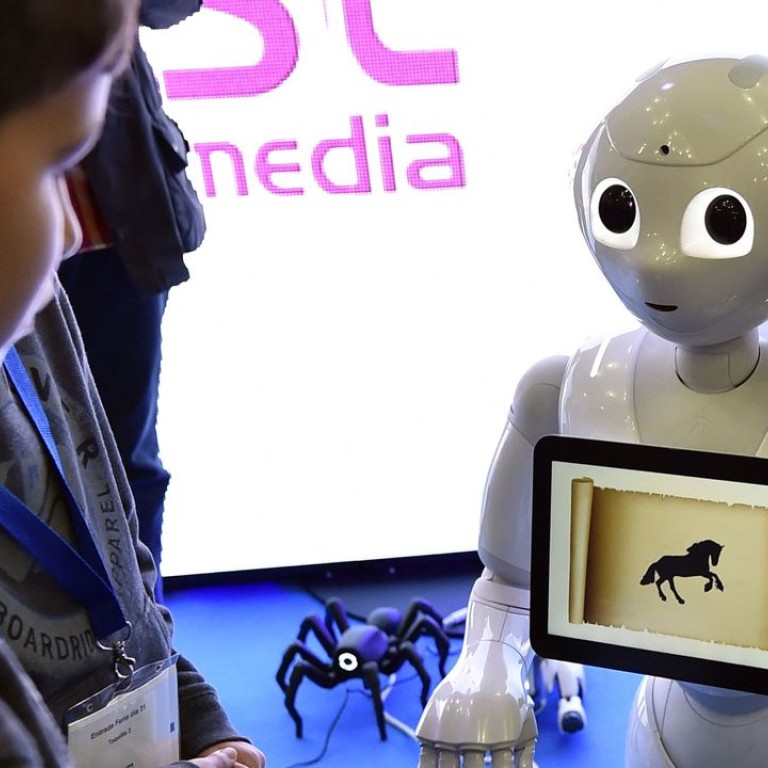
The real technology threat is already here: big data and e-commerce platforms
We’re not even close in the quest for human-level intelligence in machines
The science fiction hype peddled by researchers and the media always outpaces the technical limitations in artificial intelligence and robotics.
Artificial intelligence (AI) has been vastly over rated, yet it is regularly pronounced as the next future shock. The disconnection between popular imagination and reality is dramatic. And the threat of workers being replaced in large numbers by robots is far away and less than the immediate problem of digitalisation and automation.
The idea of modelling a brain through computational neuroscience has been around for a long enough time that researchers claim it is a feasible goal. The quest for human-level intelligence in machines is not only a failure – we aren’t even close.
Yet, the widespread and pernicious misconceptions regarding the potential hazards of AI continue to gain momentum without evidence. It is sensationalised through Hollywood’s fictional apocalyptic films such as Terminator while technologists or futurists feed the spectre of robot overlords.
The reality is that in 2012 Google’s cutting edge research lab Google X claimed it was able to develop a neural network that taught itself how to recognise a cat with 15.8 per cent accuracy. This major advance is supposed to roughly simulate a human brain connection. But, it is nowhere close to being “self-aware”, as was the “Skynet” system in Terminator.
Workers are either underpaid or replaced by automation or cheaper labour in China
A recent Deloitte’s study said that rapid advances in technology and the popularity of online shopping meant that more than 2 million jobs in the wholesale and retail sectors or almost 60 per cent of the current retail workforce – had a high chance of being automated by 2036. But there is a difference between automation and sentient robots.
Compare AI and robotics’ glacial evolution with manned flight. The Wright brothers’ first flight from Kitty Hawk, North Carolina, lifted off in 1903. By 1969 technology advanced enough to land a man on the moon. That practical line of development has completely eluded AI. Many of the researchers quoted about the revolutionary future of AI have never designed anything of practical use in AI. Industrial applications are still far away.
Today’s economic problems are partly a result of capitalism running into limitations in the form of diminishing worker productivity. Workers are either underpaid or replaced by automation or cheaper labour in China. Rapid environmental degradation and speculative investments are encouraged because they seem easier and more profitable than solving social problems or investing in real economic activity and growth. This drives subsequent financial bubbles.
The real technology threat is already here. Big data and e-commerce platforms are rapidly creating a world where an individual’s current and future purchasing power and value to the consumer system can be determined by his or her demographics, online behaviour and choices. Imagine that the entirety of your personal data, not your money, will authoritatively determine what you can and cannot possess in the present and future. It’s like a Philip Dick science fiction story where factories intuitively deliver goods and services to your home without the need for you to actually place an order.
While such a futuristic world is supposed to free and edify humans, it effectively abolishes privacy, free will and freedom. Marshall McLuhan said about this kind of big data global village: “The more the data banks record about each one of us, the less we exist.”
But then that vision of the future eradicates the social cost and the too-big-to-fail, moral hazard of supporting a money-based monetary system where the eternal price is cyclical volatility that reverberates across all asset classes and threatens global stability.
Machines and digital technology are replacing more kinds of labour at a faster rate than ever. But, they are also generating more wealth and capital for their inventors and owners. Cheap labour and ordinary investment capital are falling under pressure from automation and the data processing that increasingly magnifies its efficiency. Technology has become the third participant in the classic labour versus capital argument. Superior returns will go to those who can innovate and create new products, services and business models.
The emerging dominance of expert platforms will drive market forces to produce an outcome where an elite minority controls and manages the economy. And the majority of us will be consigned to “gigs” – temporary and insecure jobs as gardeners, waiters and nannies. It is a future foreshadowed by the current social structure in Silicon Valley.
More than ever before, people with ideas, not workers or investors – or robots – will be the scarce resource.
Peter Guy is a financial writer and former international banker

